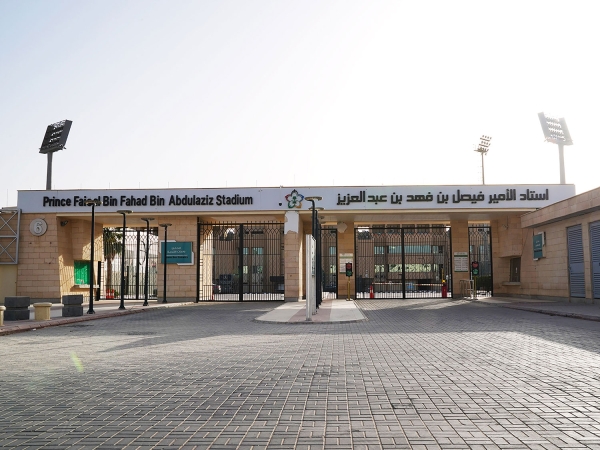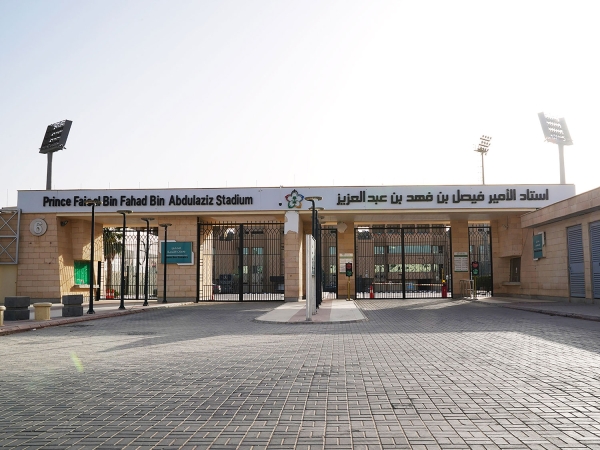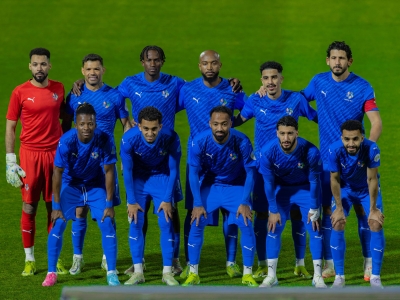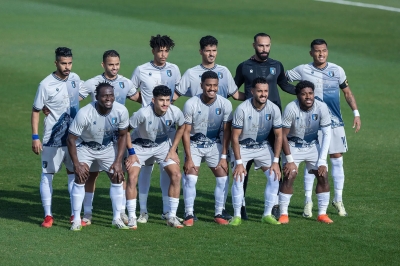


Prince Faisal Bin Fahd Sports City Stadium is one of the sports facilities in the Kingdom of Saudi Arabia and is among the stadiums proposed to host the 2034 FIFA World Cup. The new stadium is planned as part of a comprehensive development plan that includes several parks and green spaces in the surrounding area. It will be constructed using locally manufactured materials, and a large array of solar panels will be installed on the roof of the stadium, which will be surrounded by versatile green spaces.
The stadium is located in the heart of a vibrant area in Riyadh, making it a prominent destination for the local community. It is overseen by the Ministry of Sport and is one of the oldest stadiums in Saudi Arabia, established during the reign of King Faisal Bin Abdulaziz Al Saud in 1971. Prince Faisal Bin Fahd Stadium is a comprehensive complex for various sports activities. It was built on a total area of approximately 120,000 m² and has a seating capacity of 28,000 seats.
Facilities of Prince Faisal Bin Fahd Sports City Stadium
Prince Faisal Bin Fahd Sports City Stadium is surrounded by a range of facilities, including a secondary grass football field, a covered gymnastics hall, the Royal Hall building, the Saudi national football team’s training camp building, the Billiards and Snooker Federation building, the Special Needs Federation building, uncovered stands with annexes, players’ locker rooms, the referees’ club, a bodybuilding and weightlifting hall, as well as outdoor spaces, gardens, and parking areas. Primarily used for football matches, the stadium is popularly known as al-Malaz Stadium, named after the district where it is located. It also hosts official celebrations and sports and cultural competitions.
Development of Prince Faisal Bin Fahd Sports City Stadium
The General Authority for Sports (prior to becoming the Ministry of Sport) undertook the development of Prince Faisal Bin Fahd Sports City Stadium, completing the first phase of maintenance and rehabilitation in 2019. The upgrades included asphalting parking areas and internal roads, replacing old streetlight poles and fixtures, enhancing the reception area, and improving the players' entrances, referees' rooms, and match supervisors' rooms. The old player exit tunnels were replaced and expanded, while the entire stadium surface and old track were removed and replaced with new ones. Additionally, water and electrical pipelines were reinstalled along the nine thousand m² track area.
Renaming to Prince Faisal Bin Fahd Sports City
On November 19, 2023, the Ministry of Sport announced the renaming of Prince Faisal Bin Fahd Stadium to Prince Faisal Bin Fahd Sports City. This change is part of the ministry's comprehensive development plans aimed at achieving the sports-related objectives of Saudi Vision 2030. The sports city includes the main stadium, a secondary stadium, a training camp building for sports teams, a hotel, an indoor sports hall, and a fully integrated administrative building.
Information about Prince Faisal Bin Fahd Sports City Stadium
- Current status: Under construction.
- Expected completion date: 2027.
- Total capacity: 46,865 spectators
- The tournament stages hosted by the stadium: the group stage and the Round of thirty-two.
Related quizzes
Related articles

